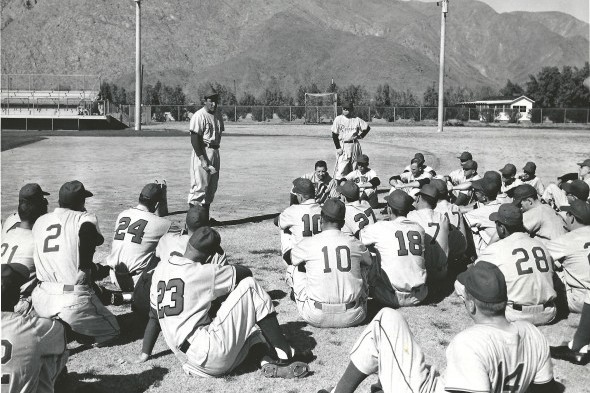
The Mariners will “Turn Back The Clock” Saturday, May 26, to 1955, a year in which Elvis reigned over rock and roll, Leave It To Beaver made its TV debut, and the Seattle Rainiers, Los Angeles Angels, San Diego Padres and Hollywood Stars waged a fierce battle for the Pacific Coast League pennant.
By David Eskenazi and Steve Rudman
The Seattle Rainiers, the citys principal baseball infatuation for more than a quarter of a century (1938-64), twice called upon native son Fred Hutchinson to come to the aid of the franchise in times of dire need.
The first was in 1938 when a 19-year-old Hutchinson, barely out of Franklin High School, won 25 games and helped save a club that a year earlier, playing as the Indians, teetered on bankruptcy.
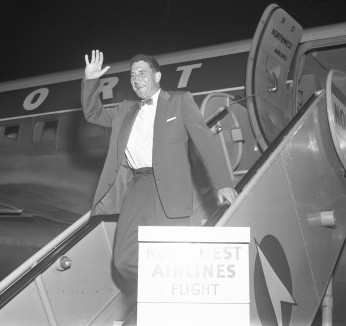
Hutchinsons breakout was saluted by The Sporting News, which named him its Minor League Pitcher of the Year. It also prompted one of the significant trades in Seattle sports history, Hutchinsons sale to the Tigers for $50,000 and a nucleus of players, including Jo Jo White and George Archie, who would help the Rainiers win three consecutive Pacific Coast League pennants (1939-41).
Seventeen years later, the euphoria attendant to those memorable summers had dissipated, the Rainiers finishing fifth (77-85) under manager Jerry Priddy in 1954.
Hutchinson, meanwhile, pitched in the majors for 10 years, fought in World War II, and managed the Detroit Tigers for three. He would have remained in the Motor City had the Tigers offered him a multi-year contract, or had Hutch been amenable to a series of one-year deals. He wasnt.
Knowing that, Hutchinsons childhood friend and teammate, Dewey Soriano, a one-time Sicks Stadium peanut vendor who worked his way up to become the Rainiers general manager, coaxed Hutchinson to turn down an offer to manage the Baltimore Orioles and return to his roots and reinvigorate public passion in a franchise that had become beset by apathy.
Three or four big league jobs are okay, but the rest of the cities are tough, Hutch told columnist Royal Brougham of the Seattle Post-Intelligencer. You suffer all season with a poor team, and many of the owners wont or cant afford to buy players needed to make the club a pennant contender.
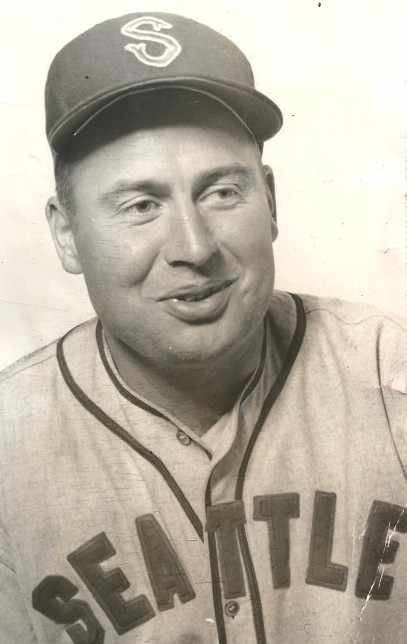
When the team flops, the manager is the goat. Then there is the terrific heat back there. I dont know whether I would take another job up there (majors). It would have to be a pretty good deal.
Both Seattle newspapers, The Times and Post-Intelligencer, uncorked cases of editorial champagne when Hutchinson agreed to rejoin the Rainiers, but neither figured Hutchinson could do much with the roster he inherited from Priddy.
Hutch and Soriano, in fact, agreed with the sports writers and set about gutting the ball club and rebuilding it practically from scratch.
When they set about dumping as many men as possible from the 1954 roster, Dewey and Hutch found San Francisco a willing taker, Lenny Anderson wrote in The Times. The San Francisco Seals took five players: Clarence Maddern and four pitchers, Pete Hernandez, Bill Evans, Steve Nagy and Gene Bearden.
Sacramento was another club that was waiting with open arms when Seattle threw open the escape hatch. The Solons took Jackie Tobin, Leo Thomas and Earl Harris.
San Diego took Al Zarilla, Portland took Artie Wilson and Bob Hall. In all, the Rainiers dumped 13 players. The Hutchinson-Soriano disposal operation stands alone, it would seem: A model for would-be dumpers everywhere.”
To replace the lightly lamented departed, Hutch and Soriano focused on acquiring as many former major leaguers as possible — players, defined by Hutchinson, who understood how to give me nine good innings every day.
The roster rebuild became a season-long work-in-progress, in part because a series of injuries to the pitching staff forced Hutch and Soriano to scrounge for replacements, in part because Hutch always sought out and signed upgrades when they became available.
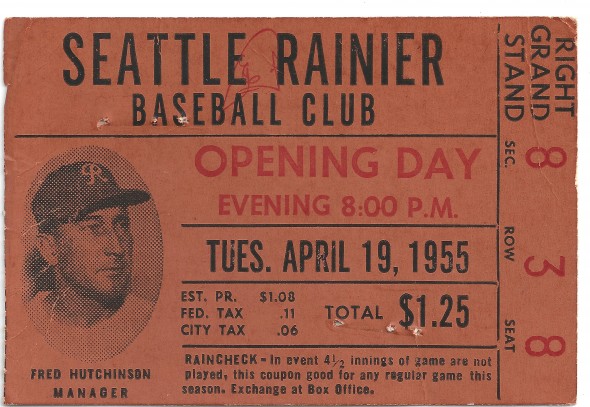
Former MLB notables imported by Hutchinson and Soriano over the course of the season included 1B Bill Glynn (Indians), RHP Lou Kretlow (Orioles), RHP Elmer Singleton (Cubs), RHP Larry Jansen (Giants), RHP Ewell Blackwell (Reds, Yankees, Athletics), RHP Howie Judson (White Sox, Reds), INF Vern Stephens (Browns, Red Sox, White Sox, Orioles) and C Myron Joe Ginsberg (Tigers, Indians).
A year before joining the Rainiers, Glynn was the first baseman on a Cleveland Indians team that won 111 games. Although not much of a hitter in the majors (.251 BA), Glynn had a reputation for delivering clutch hits, which is what attracted Hutch, and occasionally producing the long ball. (Glynn belted three home runs off three Detroit pitchers July 5, 1954 in a 13-6 Cleveland win at Briggs Stadium.)
Purchased by Hutchinson June 7, 1955, from the Baltimore Orioles, Kretlow pitched in the majors for 10 years, and his versatility appealed to Hutch. Kretlow had 22 complete games in 104 major league starts and finished 43 other games as a reliever.
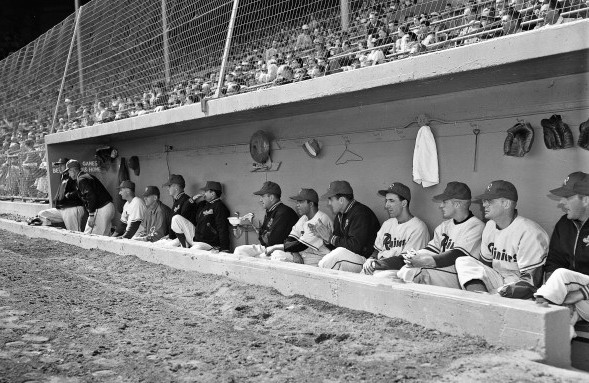
Singleton, who started his pro career with the Wenatchee Chiefs of the Western International League, spent parts of five seasons with the Boston Braves, Pittsburgh Pirates and Washington Senators, primarily as a reliever. Hutch viewed Singleton, who threw a spitball as his out pitch, as starting material.
Jansen brought an intriguing history to the 1955 Rainiers. A two-time National League All-Star, he’d twice been a 20-game winner for the New York Giants (1947, 1951), had finished second in the 1947 American League Rookie of the Year voting to Jackie Robinson, and was the winning pitcher in the 1951 NL pennant tiebreaker ended by Bobby Thomsons shot heard ’round the world.
Jansen also held the distinction of allowing the final hit of Joe DiMaggios carreer and Mickey Mantles first World Series hit, both in 1951.
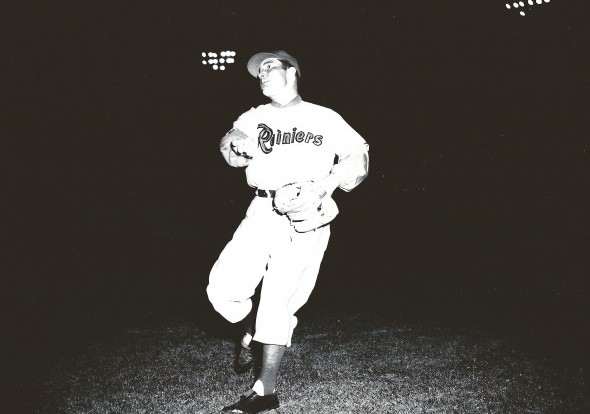
Hutch picked up Blackwell, a six-time All-Star, after his April 30 release by the Kansas City Athletics. Blackwell owned 82 major league wins and the distinction of being the pitcher who came closest to duplicating Johnny Vander Meers feat of throwing back-to-back no-hitters (Blackwell no-hit the Boston Braves June 18, 1947, and held the Brooklyn Dodgers hitless until the ninth inning in his next start).
Hutch acquired shortstop Vern Stephens, a long-time star for the St. Louis Browns (1941-47) and Boston Red Sox (1948-52) following his release from the White Sox. Stephens came with eight All-Star appearances and six top-10 finishes in AL MVP voting to his credit.
Ginsberg, who caught the first of Virgil Trucks two no-hitters May 15, 1952, came aboard after his release by the Indians to back up Ray Orteig (Ginsberg wound up playing more often than Hutch figured, due to Orteigs stints on the disabled list).
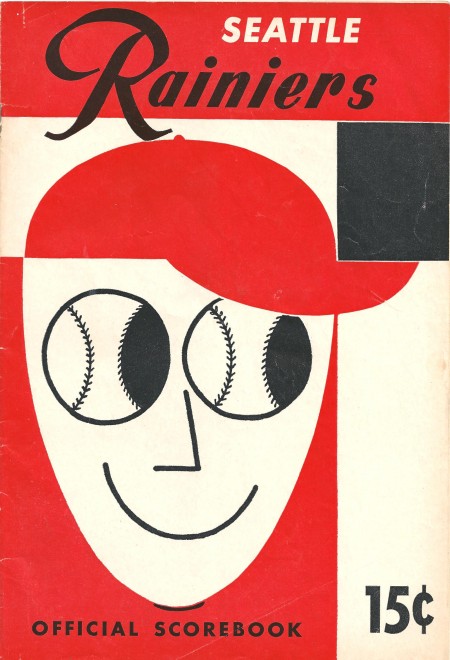
Judson spent seven years in the majors (1948-54) with the White Sox and Reds, for whom he made 37 starts in 1954 (8-10, 3.95) and recorded wins over Lew Burdette and Bob Friend. Hutch pursued Judson because he could start and relieve (14 major league saves).
To these ex-big leaguers, Hutchinson added OF Bobby Balcena, the first of Filipino descent to play professionally in the United States. Just 5-foot-6 and 160 pounds, Balcena knocked around with six minor league clubs. Hutch liked his speed and installed him in center field.
Blending his imports with holdovers Orteig, OF Carmen Mauro, who played four major league seasons with the Cubs, Dodgers, Senators and Athletics, and INF Rocky Krsnich, Hutchinson cobbled together a roster that finally included 42 players, 22 of whom pitched.
Hutch went to extraordinary lengths to win the pennant, including using eight second basemen, but best exemplified by one of the great experiments in Seattles pro sports history, the signing of local fast pitch phenom Bobby Fesler (see Wayback Machine: The Bob Fesler Experiment).
The 1955 Rainiers had no superstars, no 20-game winners, no .300 hitters and no home run hitters (Glynns 13 led the club). But Hutch molded his eclectic cast into an outstanding team.
A day after 3,000 people jammed Victory Square (between 4th and 5th avenues on University Street in downtown Seattle) to rally the Rainiers for the upcoming pennant race, Hutchs bunch tore apart the Sacramento Solons 14-3 in the first game of a season-opening doubleheader witnessed by more than 10,000 at Sicks Stadium.
Jansen, the former New York Giant, retired the first 10 men he faced and then watched his teammates plate seven runs in the sixth inning, highlighted by an Orteig grand slam.
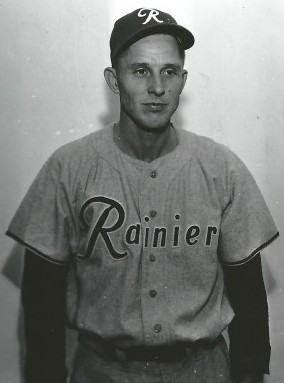
Another newcomer, Ryne Duren, whod had a cup of coffee with the Baltimore Orioles a year earlier, and who wore glasses as thick a Coke bottles, pitched well enough to win the nightcap, but received no run support and wound up a 1-0 loser.
Known for his blazing fastball and poor vision, Duren so scared hitters that Casey Stengel observed, I would not like to hit against Duren because if he ever hit you in the head, youd be in the past tense.
As author Dan Raley wrote in “Pitchers Of Beer,” Duren pretended to be blind whenever on the mound, fumbling and reaching for the rosin bag as if he were someone truly sightless locating a curb with a cane. His first warm-up pitch typically sailed over the catchers head and the second one was always in the dirt. Batters were being set up.
Marv Williams, a 32-year-old PCL rookie who spent most of his career playing in Mexico, Venezuela and Cuba, and who became the first of the eight second basemen, carried the early batting load as the Rainiers jockeyed with the San Diego Padres and Sacramento for first place.
Seattle reached the top spot for the first time April 23 by sweeping Sacramento in a doubleheader 1-0 and 7-3, the first-game win coming courtesy of Singletons three-hitter.
Two days later, the Rainiers took a break from PCL action in order to play an exhibition game against Wenatchee, a Class B team orphaned when the Western International League collapsed. Soriano and Hutch signed an affiliate agreement with the club, managed by former Rainiers great Edo Vanni, intending to use it as a training ground for young prospects the team hoped to develop.
To enhance the show for Wenatchee fans, Hutch pitched for the Rainiers, perhaps not the wisest move of the 55 season by the 35-year-old manager. The young Chiefs, apparently not awed by Hutchinsons 10 seasons on a major league mound, raked him for six earned runs in four innings, the highlight blow a two-run homer by Bob Duretto.
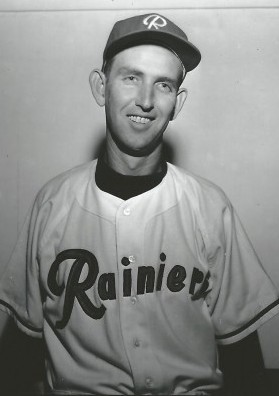
The Rainiers had considerably more success against PCL opponents. In the seasons first two weeks they came from behind to win six times, including a three-run rally in the ninth inning April 27 to beat San Diego 6-5.
After George Schmees collected three hits in a 6-3 win over San Diego April 29, the Rainiers closed out the month with a 16-10 record and a one-game lead over the Angels (14-10). Then they opened May by winning a remarkable doubleheader from San Diego, giving them 11 victories in 14 games.
The big thrill of the Rainiers this season is pulling games out of the fire, wrote Anderson of The Times. Both contests yesterday were won in come-from-behind fashion. In the first tilt, the Padres were ahead 2-1 when Gene Verble cleaned the bases with a long double to assure the victory (4-3).
Three times in the long game (nightcap), Seattle came from behind to tie and shoved over the winning run in the 12th inning. Ray Orteig and Bob Balcena supplied the heavy stick work, each getting a home run.
But by the end of May, the Rainiers appeared hopelessly out of the race, that because the Padres won 24 of 25 games to take a commanding lead in the pennant race.
Hutch spent nearly the rest of the season making roster adjustments in an attempt to overtake the Padres. On May 10 Hutch brought aboard Lou Ortiz, on option from the Philadelphia Phillies, and made him the new second baseman. A day later, Hutch and Soriano purchased Glynn from the Cleveland Indians.
On May 15, Duren, the deliberately wild 25-year-old right hander, nearly made PCL history when he one-hit the Angels 5-0 in front of 13,085 in Los Angeles. Only an infield single by Gene Mauch, who would manage the Phillies, Expos, Twins and Angels from 1960-87, kept Duren, just off the disabled list, from completing a no-hitter.
Even though the Rainiers produced a winning May, they finished the month 30-24, 7 ½ games back of San Diego (36-16).
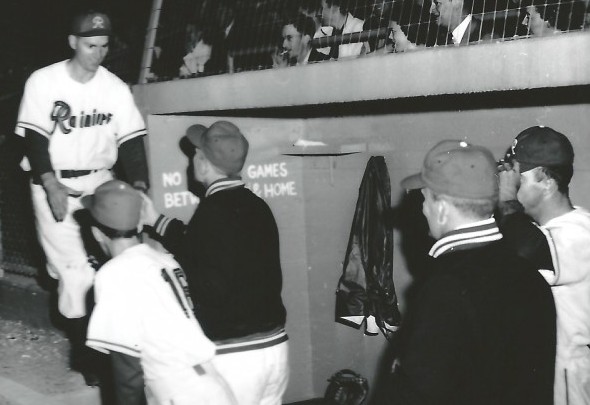
At the start of June, Hutchs pitchers began dropping with injuries. A day after Hutch fined pitcher John Oldham and Mauro $10 each for getting caught up in a triple play pulled off by San Francisco, he signed Blackwell, just released by the Seals. The next day, June 7, Hutch acquired Lou Kretlow and Van Fletcher.
Kretlow was Baltimores Opening Day starter, but went 0-4 record in 15 starts, making him expendable. Hutch and Soriano acquired Kretlow, supposedly ailing with a sore arm, with an outright purchase. It would prove to be the key move of the season, just ahead of the key series of the season, a seven-game set with San Diego, leading the league by 6½ games June 7.
Blackwell lost his Rainiers debut 4-1, but by the time the series ended, with an 8-2 an 3-2 doubleheader sweep, Seattle cut San Diegos lead to three games. The Rainiers then put together a nine-game winning streak, tying the Padres for first June 23 when Art Schults three-run homer gave the Rainiers a 4-3 win over Portland.
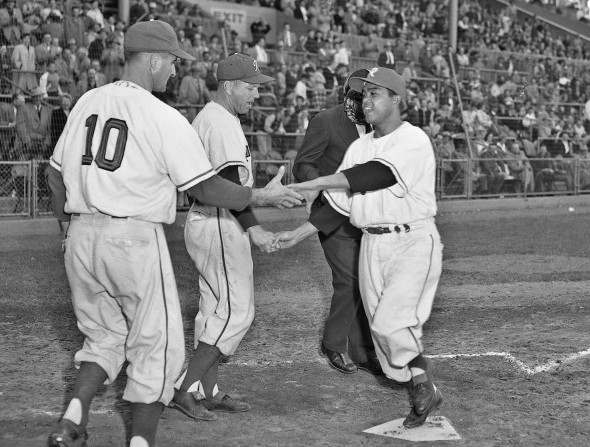
Hutch and Soriano made another key move July 7, when they acquired major league veteran Vern Stephens, a 34-year-old infielder who had been released by the White Sox. Stephens ripped a grand slam in his first Rainiers at-bat, hit .372 over his first 12 games, and went on to hit .338 with seven home runs in 52 games.
By mid-summer, four teams Rainiers, Stars, Padres and Angels had a chance to win the pennant, only three games separating the first-place Rainiers from the fourth-place Angels. Hutchinson sought every advantage at his disposal, even going to the extreme of trying out a softball pitcher.
On July 10, Hutchinson summoned local legend Bob Fesler to throw against a lineup of Rainiers and Sacramento Solons hitters during batting practice. Result: Both clubs found Fesler overpowering, bewildering and unhittable.
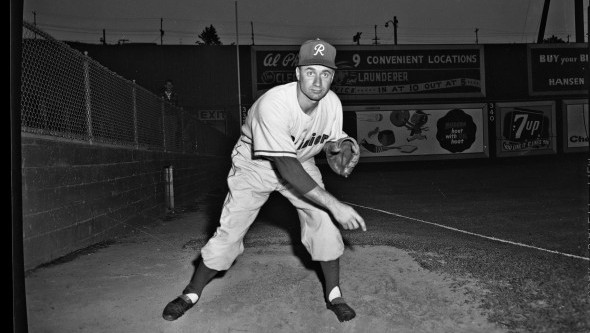
Fesler faced 11 batters from the 46-foot softball distance. With his windmill underhand motion, he fanned them all, including Hutchinson, who couldnt get his bat on the ball. Hutchinson promptly offered Fesler a contract, and turned him over to former Rainiers great Kewpie Dick Barrett to prepare him to face PCL teams for real.
July 24, 1955, will always rank among the great days in Seattles pro baseball history, not so much because the Rainiers won a doubleheader from the Padres at Sicks Stadium, giving them a four-game lead in the standings, but because of how they won it.
In the first game, with a crowd of 10,000 agonizing, the Rainiers trailed 7-0 heading into the bottom of the seventh. They got back a run, added six more in the eighth to tie the score, and won 8-7 in the bottom of the ninth on a walk-off home run by Stephens.
We never win an easy one, said Hutch after Stephens blow.
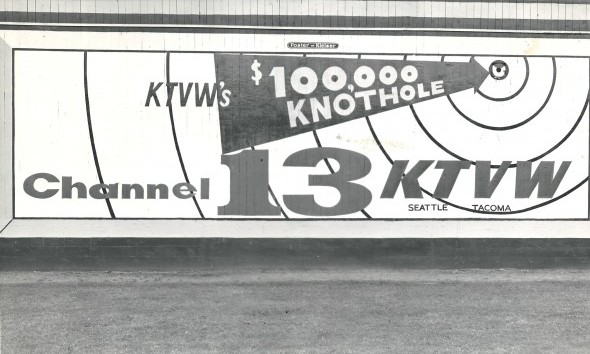
In the seven-inning nightcap, Singleton threw his second career PCL no-hitter (only San Franciscos Skeeter Fanning, Oct. 25, 1914 vs. Portland and June 23, 1916 vs. Vernon, had pitched two), beating San Diego 2-0.
Only two Padres reached base, Dick Faber and Dick Sisler, who would manage the Rainiers in 1960 (Singleton pitched his first PCL no-hitter Apri. 24, 1952, for San Francisco against Sacramento).
Three weeks later, the Rainiers hosted the San Francisco Seals in an Aug. 10 doubleheader, 13,999 (nearly triple the average attendance for a 1955 Rainiers game) jamming the Sicks’ grounds to watch fast-pitch star Fesler make his much-anticipated PCL debut.
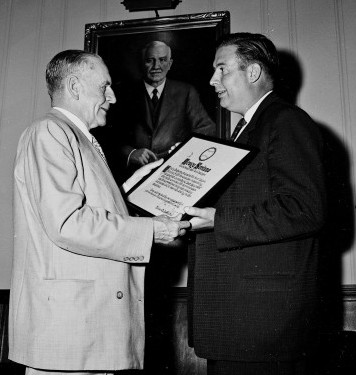
Naturally, the game was heavily hyped by the local media, and fans packed Sicks Stadium to cheer on their new pitching phenom, Seattle Times columnist Don Duncan reported. The Rainiers were in the midst of a pennant battle and every game was important.
Fesler spent several days after signing his contract working out under the guidance of Barrett and Orteig, mainly trying to adapt to the pitching distance of 60 feet, six inches, and mastering the intricacies of the balk rule, not applicable in softball. Fesler whiffed the first Seal to face him, Jimmy Moran, with three underhanded fastballs.
After Moran returned to the bench, Fesler, in succession, gave up a walk, a wild pitch, a single, a walk, a three-run double and another walk. Hutch pulled him, but used him in relief in the second game. Fesler fared no better with his second chance, allowing four walks, three singles and a home run. He also cut loose three wild pitches.
Hell have to learn to get the ball over, Hutch said. They didnt him too hard, but the walks killed him.
Fesler never did adapt to 60 feet, six inches and the Rainiers soon farmed him out.
On Aug. 19, Hutchinsons 36th birthday, 17 years after winning his 19th game for the 1938 Rainiers on his 19th birthday, one of the landmark events in Seattle pro sports history, the club feted Hutch in a ballpark party prior to a game with the Hollywood Stars, lavishing Hutch with gifts.
Hollywood manager Bobby Bragan, asked to speak, won no admirers with the Sicks’ Stadium throng when he introduced his team as the 1955 PCL champions. Taking the microphone from Bragan, Hutchinson replied, There are 21 fellows on this side of the field who will dispute that.
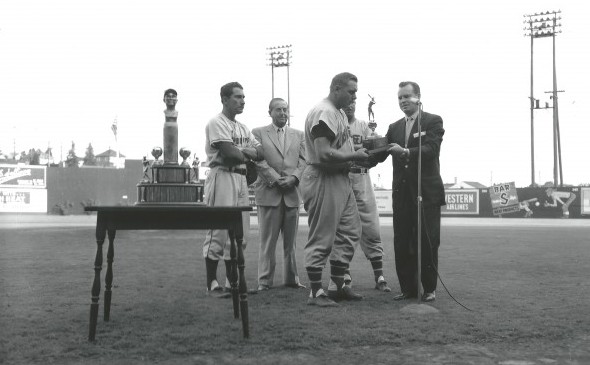
Hutch made his last roster acquisition with three weeks remaining in the season, and it shocked most and irked Rainiers’ management. But Hutch needed yet another second baseman, and the previous year’s manager, Jerry Priddy, could play it even though he was out of shape.
Priddy, who embarrassed the Rainiers the previous season by brawling with San Diego catcher Willie “Red” Mathis (Mathis suffered a broken arm, sidelining him for the season), made Hutch come off a genius, collecting 12 hits in 36 at-bats as the Rainiers closed in on the pennant.
Although Singleton led the staff with a 19-win effort, the key to the Rainiers season became Hutch’s mid-season acquisition of Kretlow, who went 14-3 in the second half, his biggest win coming Sept. 10.
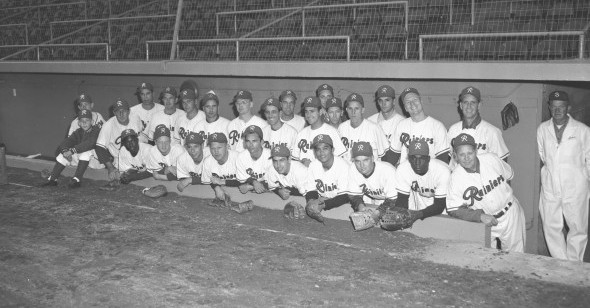
The Rainiers needed one win to give the franchise its first pennant since Rogers Hornsby managed the club 1951. Kretlow provided it. After working out of a first-inning jam by fanning L.A. slugger Steve Bilko (313 minor league home runs) Kretlow mowed down the Angels 3-1 for his 12th consecutive victory.
More than any of the 1955 pennant aspirants, the Angels, featuring Most Valuable Player Bilko (37 home runs, 124 RBIs), future big league manager Gene Mauch (.296 BA), and 17-game winners Jim Brosnan and Cal McLish (both would enjoy productive MLB careers), stood on the verge of greatness.
Led by Bilkos 55 homers, the Angels would win 107 games in 1956, taking the pennant by 16 games. But the 55 Angels didnt yet have enough to overcome Hutch’s numerous roster manipulations and bench management.
In addition to Singleton’s 19 wins and Kretlow’s 14, Judson provided 10, rookie John Oldham nine, Jansen seven and Blackwell five. Among Hutch’s hitting acquisitions, Stephens hit .338, Ginsberg .293, Balcena hit .291 and Glynn .270.
The Rainiers finished 95-77, fending off San Diego (92-80) by three games. The Angels (91-81) and Hollywood Stars (91-81) tied for third.
The crowd of 5,100 that eyed the pennant clincher swelled the Rainiers season attendance to 342,101, more than double the previous year, another Hutchinson coup.
With Major League Baseball three years away from expanding to the West Coast, the Rainiers 1955 pennant marked their last PCL hurrah, and Hutchinsons second in two years 17 seasons apart in a Seattle uniform.
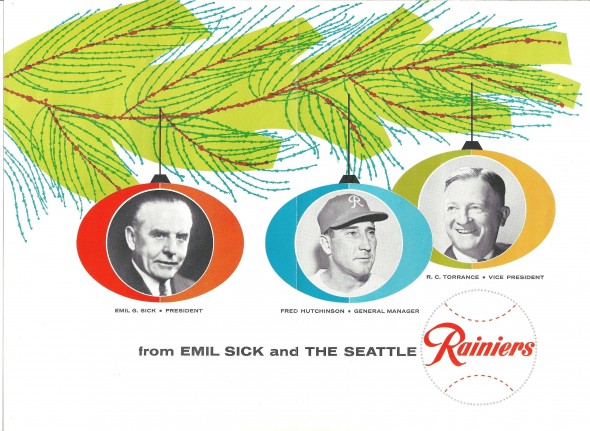
————————————————-
Many of the historic images published on Sportspress Northwest are provided by resident Northwest sports history aficionado David Eskenazi. Check out Davids Wayback Machine Archive. David can be reached at (206) 441-1900, or at seattlesportshistory@gmail.com

13 Comments
What a month: We’ve had stories on the ’24 Indians, Tealey Raymend and now this. The Wayback Machine is becoming my favorite feature on SPNW.
The ’55 Rainiers played a few years before I was born, but they hold a special place in my heart for many reasons. My grandfather was the groundskeeper at Sicks at the time (that’s him in his overalls to the far right in the team dugout photo near the bottom of the story) and the Rainiers gave him a “Night” at the ballpark that year that included a trip to New York for the Yankees-Dodgers World Series. I still have Grandpa’s programs and ticket stubs from that along with other things from that particular season. Also, Hutch had been a friend of the whole family before he even went to Franklin…honest, decent and much more gentle than his public image suggested. He used to play catch with my mom when she was a little girl.
These Waybacks always either remind me of some things or teach me about others, but this one really touched me personally because it brought me back to when I was 10 or 11 and literally sat at Grandpa’s knee listening to his stories about the Rainiers. I used to hate baseball when I was a little kid because NBC would always preempt my favorite cartoons to run the Game of the Week, but because of Grandpa, I couldn’t imagine loving another sport more.
Thanks, Dave and Steve…again.
Once again, thanks for visiting! Already got another one in the works.
Thanks guys. Dave, I KNEW you’d figure out who I was with those stories..my cover’s blown! Now I’ll really have to watch what I post.
And Steve, I was thinking about that column you did on Johnny Neumann for the P-I back in the 70’s because he’s FINALLY moved back to Memphis and visited the Ole Miss campus for the first time since 1971. Great pieces on one of the ultimate “what might have beens” of basketball from the Memphis Commercial-Appeal and SEC Digital Network via Google search…Neumann’s been coaching (!) overseas for 30 years now.
I’ll be damned. Before I moved to Seattle, I covered the Utah Stars of the old American Basketball Association (Zelmo Beatty and Willie Wise now live in Seattle). I got to know Johnny Neumann really well when Memphis traded him to Utah. Even had lunch at his house one day, and spent a weekend in New York with him during a playoff matchup with Julius Erving and the New York Nets. Heck of a nice guy, but an easy mark. Spent most of the money he earned playing basketball on supporting a brother who was in an iron lung, and basically giving his money away. I know one sports writer — still active, on ESPN, no less — who soaked him out of thousands of dollars. Boy, I could go on and on with Johnny Neumann stories — just from my own personal experiences with him. But thanks for reminding me of him. I always liked the guy. Don’t know what happened to her, but he had a knockout for a wife. As a basketball player, the thing I remember most: he was famous as a scorer — a la Pete Maravich — but he actually was one of the greatest passers I’ve ever seen. Thanks for weighing in.
Bruce,
Steve and I are pleased that you are so enjoying the Wayback Machine feature. Thanks again for sharing your family baseball lore….great stuff!
What a month: We’ve had stories on the ’24 Indians, Tealey Raymond and now this. The Wayback Machine is becoming my favorite feature on SPNW.
The ’55 Rainiers played a few years before I was born, but they hold a special place in my heart for many reasons. My grandfather was the groundskeeper at Sicks at the time (that’s him in his overalls to the far right in the team dugout photo near the bottom of the story) and the Rainiers gave him a “Night” at the ballpark that year that included a trip to New York for the Yankees-Dodgers World Series. I still have Grandpa’s programs and ticket stubs from that along with other things from that particular season. Also, Hutch had been a friend of the whole family before he even went to Franklin…honest, decent and much more gentle than his public image suggested. He used to play catch with my mom when she was a little girl.
These Waybacks always either remind me of some things or teach me about others, but this one really touched me personally because it brought me back to when I was 10 or 11 and literally sat at Grandpa’s knee listening to his stories about the Rainiers. I used to hate baseball when I was a little kid because NBC would always preempt my favorite cartoons to run the Game of the Week, but because of Grandpa, I couldn’t imagine loving another sport more.
Thanks, Dave and Steve…again.
Once again, thanks for visiting! Already got another one in the works.
Thanks guys. Dave, I KNEW you’d figure out who I was with those stories..my cover’s blown! Now I’ll really have to watch what I post.
And Steve, I was thinking about that column you did on Johnny Neumann for the P-I back in the 70’s because he’s FINALLY moved back to Memphis and visited the Ole Miss campus for the first time since 1971. Great pieces on one of the ultimate “what might have beens” of basketball from the Memphis Commercial-Appeal and SEC Digital Network via Google search…Neumann’s been coaching (!) overseas for 30 years now.
I’ll be damned. Before I moved to Seattle, I covered the Utah Stars of the old American Basketball Association (Zelmo Beatty and Willie Wise now live in Seattle). I got to know Johnny Neumann really well when Memphis traded him to Utah. Even had lunch at his house one day, and spent a weekend in New York with him during a playoff matchup with Julius Erving and the New York Nets. Heck of a nice guy, but an easy mark. Spent most of the money he earned playing basketball on supporting a brother who was in an iron lung, and basically giving his money away. I know one sports writer — still active, on ESPN, no less — who soaked him out of thousands of dollars. Boy, I could go on and on with Johnny Neumann stories — just from my own personal experiences with him. But thanks for reminding me of him. I always liked the guy. Don’t know what happened to her, but he had a knockout for a wife. As a basketball player, the thing I remember most: he was famous as a scorer — a la Pete Maravich — but he actually was one of the greatest passers I’ve ever seen. Thanks for weighing in.
Bruce,
Steve and I are pleased that you are so enjoying the Wayback Machine feature. Thanks again for sharing your family baseball lore….great stuff!
Dave ;
Love the wayback machine stuff and the history of baseball in Seattle.We met in Marysville a few years ago and I sold you some of my old Rainiers programs when I was in need of $$, Now in Wenatchee and loved the Chiefs reference.Hard to find items even over here.Always glad my stuff went to you to be preserved. Keep up the good work!
Dave ;
Love the wayback machine stuff and the history of baseball in Seattle.We met in Marysville a few years ago and I sold you some of my old Rainiers programs when I was in need of $$, Now in Wenatchee and loved the Chiefs reference.Hard to find items even over here.Always glad my stuff went to you to be preserved. Keep up the good work!
Channel 13, of course is today’s KCPQ-TV, Seattle’s Fox network station.